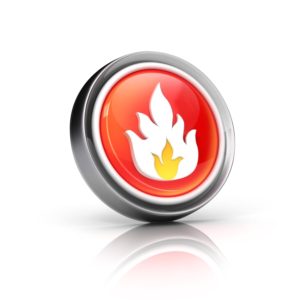
How To Put Out An Electrical Fire – We can harness the power of fire for our benefit in cooking, warmth, or enjoyment. An uncontrolled blaze can threaten life or property, resulting in grief and devastation. Fire is a true force of nature and we must learn to respect it, whether good or bad. A frequent type of fire in a home is an electrical fire, which requires specialized, though simple, knowledge to bring under control. Click here for the Best-Selling Fire Safety Products.
The Fire Triangle
Learning to control fire begins with understanding its needs. All fires require three elements:
Fuel is any burnable material, whether wood, paper, or plastic.
Heat provides the spark to ignite a fire. This can come from a match, a metal striker, or an electrical source.
Oxygen allows the combustion reaction to start and continue.
To extinguish any fire, you need to remove one of these three elements. Be sure to assess how the fire started to ensure that your efforts to put it out don’t make the situation worse.
It’s Electric
The National Fire Protection Association reports that electrical equipment malfunctions rank among the top three causes of home fires in the United States. Whether through faulty wiring in the walls, frayed cords on equipment, or overloaded outlets and breakers, electrical power can pose significant threats to life and property if not maintained.
If you find yourself in a situation where you suspect a fire has an electrical source, follow the steps outlined below to extinguish it properly.
Disconnect the Electricity
While the burning material initially sparked by an electrical source will provide heat to feed the flames, putting out the fire may not alone solve the problem. Unless you remove the source of electric power, a fire can re-ignite and cause further issues.
If a corded appliance is aflame, and it is safe to do so, unplug the cord from the wall. In the event you can’t unplug the appliance, find the breaker supplying the power and shut it off. Even if you need to shut off all power to the house, removing the flow of electricity will prevent a fire of this type from sparking back to life.
Extinguish the Fire
Once you have shut off the electrical source, put out the fire if you are able. Of chief importance, never use water on an electrical fire. If there is any chance that the electricity is still active, adding water can result in an electrocution hazard and may make the fire worse.
The best way to extinguish an electrical fire is to smother it. Use a Class C (or Class ABC) fire extinguisher, which is specifically rated for electrical fires. In a pinch, cover the fire with a large amount of common baking soda to choke off the source of oxygen.
Baking soda contains sodium bicarbonate, which is the same chemical used in Class C fire extinguishers. In cases where neither is available and the fire is small, you can use a heavy blanket to smother a fire. Ensure that you actually put out the fire and do not add to its fuel supply. Once extinguished, and if you haven’t already, turn off the power to the appliance, room, or house to prevent the fire from restarting.
Evacuate if Needed
If you are unable or unwilling to put out an electrical fire, get out of the building, closing doors behind you to limit the spread of the fire. Call 9-1-1 from a safe distance away and wait for help to arrive.
Proper Prevention
Even better than extinguishing an electrical fire is preventing one from occurring in the first place. Educate yourself on the causes of electrical fires and learn how to handle a fire that may arise. Calm action in the face of danger results in greater protection for lives and property.
Electrical Inspection. Whether you hire an inspector or make a close examination yourself, investigate the condition of wiring throughout your home. Check basements, attics, and any other place that wiring is visible. If you find any frayed or charred electrical components, be sure to replace them soon and properly.
Correct Light Bulb Wattage. Lighting fixtures are all rated for a certain maximum wattage. Installing a light bulb that draws more power than is safe for the socket can lead to overheating and a potential fire.Extension Cords. Every so often, a homeowner or renter needs to use electrical equipment in a location where there are no wall sockets. Extension cords allow for a degree of freedom, but they should only be a temporary solution and never used for heating devices or air conditioners.
Don’t Overload Outlets.
Like lighting fixtures, wall outlets and electrical circuits are designed to handle a maximum amount of power. If too many appliances are plugged into a single outlet or circuit, the wiring can overheat or short out, resulting in a potentially hazardous situation.
Buzzing or Flickering Lights. Be aware of lights that blink, flicker, or buzz. These warning signs can point to impending electrical failure. Have an electrician examine the system for possible repairs.
Check Devices for Frayed Cords. An electrical cord with a broken or frayed covering can expose live wires and create sparks. Especially if cords are out of plain sight (e.g., behind furniture), bare spots can easily kindle a fire.
Be Safe. Be Smart. Have a Plan.
While extinguishing electrical fires requires specific know-how, some basic steps are applicable for any type of house fire. Install working smoke detectors in your house and check them regularly. Create and practice an escape plan. Know where breakers and electrical shut-offs are located and how to operate them. Any fire in your home can be a scary experience. Being prepared with knowledge can increase your confidence to keep your household safe and secure.